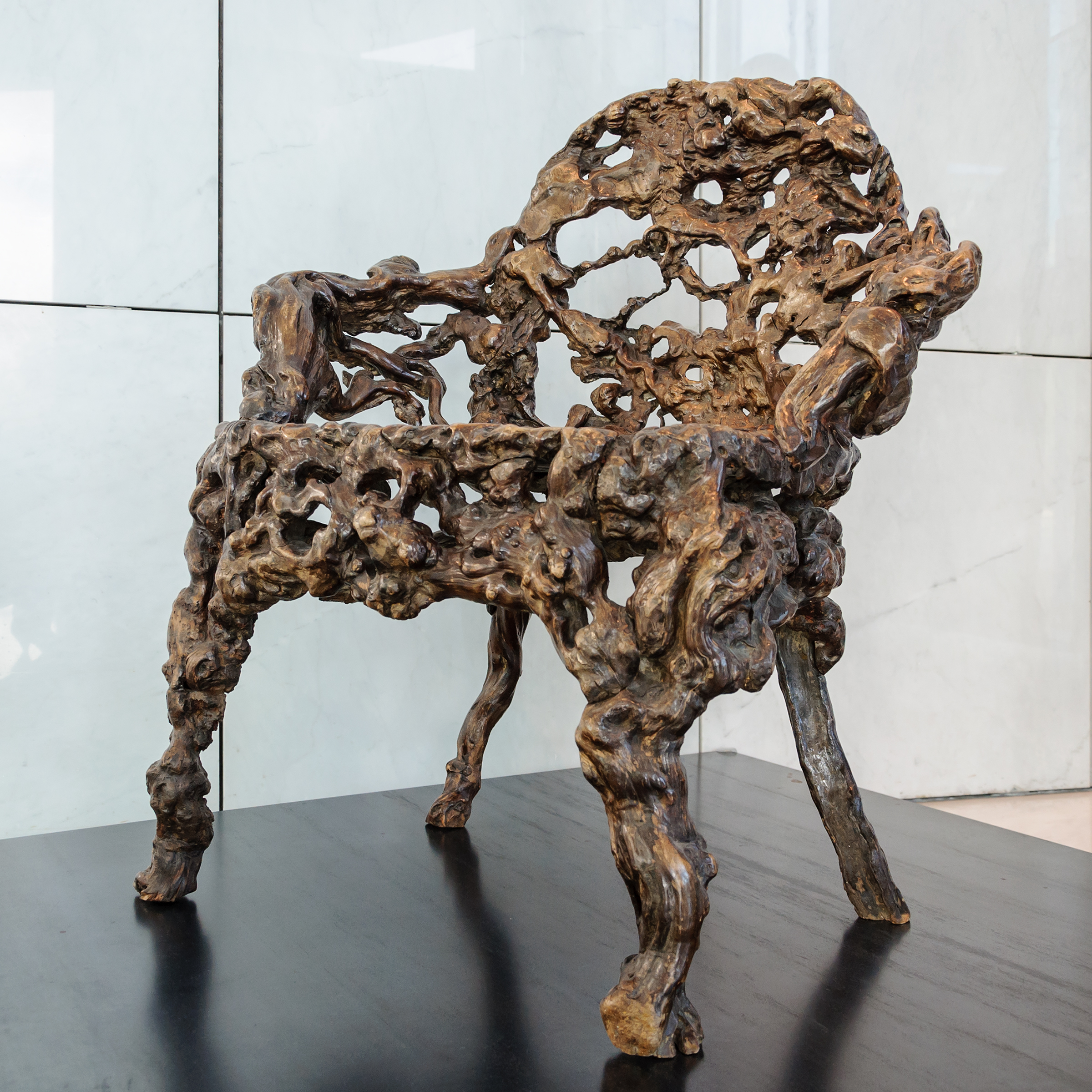Root carving on:
[Wikipedia]
[Google]
[Amazon]

 Root carving is a traditional
Root carving is a traditional
 Root carving preserves the natural beauty of roots, allowing artists—both ancient and modern—to create vivid, lifelike works by emphasizing the roots' natural forms. Carvings may be of artistic or practical value, with subjects ranging from depictions of mythological stories to coffee tables.
Root carving is distinct from
Root carving preserves the natural beauty of roots, allowing artists—both ancient and modern—to create vivid, lifelike works by emphasizing the roots' natural forms. Carvings may be of artistic or practical value, with subjects ranging from depictions of mythological stories to coffee tables.
Root carving is distinct from

 Root carving is a traditional
Root carving is a traditional Chinese art
Chinese art is visual art that originated in or is practiced in China, Greater China or by Chinese artists. Art created by Chinese residing outside of China can also be considered a part of Chinese art when it is based on or draws on Chine ...
form that involves carving
Carving is the act of using tools to shape something from a material by scraping away portions of that material. The technique can be applied to any material that is solid enough to hold a form even when pieces have been removed from it, and y ...
and polishing
Polishing is the process of creating a smooth and shiny surface by rubbing it or by applying a chemical treatment, leaving a clean surface with a significant specular reflection (still limited by the index of refraction of the material accordi ...
tree root
In vascular plants, the roots are the plant organ, organs of a plant that are modified to provide anchorage for the plant and take in water and nutrients into the plant body, which allows plants to grow taller and faster. They are most often bel ...
s into various artistic creations.
History
Root carving has been practiced for centuries. Like many other artistic crafts, root carvings were initially created using primitive techniques. The earliest root carvings are “ 辟邪” and “角形器” from theWarring States period
The Warring States period in history of China, Chinese history (221 BC) comprises the final two and a half centuries of the Zhou dynasty (256 BC), which were characterized by frequent warfare, bureaucratic and military reforms, and ...
.
In the Sui and Tang dynasties
A dynasty is a sequence of rulers from the same family, usually in the context of a monarchical system, but sometimes also appearing in republics. A dynasty may also be referred to as a "house", "family" or "clan", among others.
Historians ...
, root carving prevailed among the general public and the governing class. In the Tang dynasty, people emphasized the natural forms of roots, cleverly taking advantage of the effect of corroded and moth-eaten material.
Root carvings were also typical in grottoes Grottoes may refer to:
*The plural form of Grotto (disambiguation)
* Grottoes, Virginia, a town named for the nearby cave system Grand Caverns
{{Disambig ...
and temples during the Song
A song is a musical composition performed by the human voice. The voice often carries the melody (a series of distinct and fixed pitches) using patterns of sound and silence. Songs have a structure, such as the common ABA form, and are usu ...
and Yuan dynasties. Roots were used to carve Buddha statues
Much Buddhist art uses depictions of the historical Buddha, Gautama Buddha, which are known as () in Sanskrit and Pali. These may be statues or other images such as paintings. The main figure in an image may be someone else who has obtained B ...
, which contrasted favorably with clay.
Features
engraving
Engraving is the practice of incising a design on a hard, usually flat surface by cutting grooves into it with a Burin (engraving), burin. The result may be a decorated object in itself, as when silver, gold, steel, or Glass engraving, glass ar ...
. Although its aesthetic principles share common ground with engraving, root carving uniquely applies their shared expressive techniques. Root carving and engraving share expressive techniques with wood carving
Wood carving (or woodcarving) is a form of woodworking by means of a cutting tool (knife) in one hand or a chisel by two hands or with one hand on a chisel and one hand on a mallet, resulting in a wooden figure or figurine, or in the sculpture, ...
, sculpture
Sculpture is the branch of the visual arts that operates in three dimensions. Sculpture is the three-dimensional art work which is physically presented in the dimensions of height, width and depth. It is one of the plastic arts. Durable sc ...
, and stone carving
Stone carving is an activity where pieces of rough natural stone are shaped by the controlled removal of stone. Owing to the permanence of the material, stone work has survived which was created during our prehistory or past time.
Work carried ...
. However, root carving places a focus on enhancing and preserving the natural shape of the roots, in addition to artificial polishing. Root carving is guided by the inherent qualities of the root rather than by strictly carving images.References
External links
{{Woodworking Arts in China Sculpture techniques Woodworking